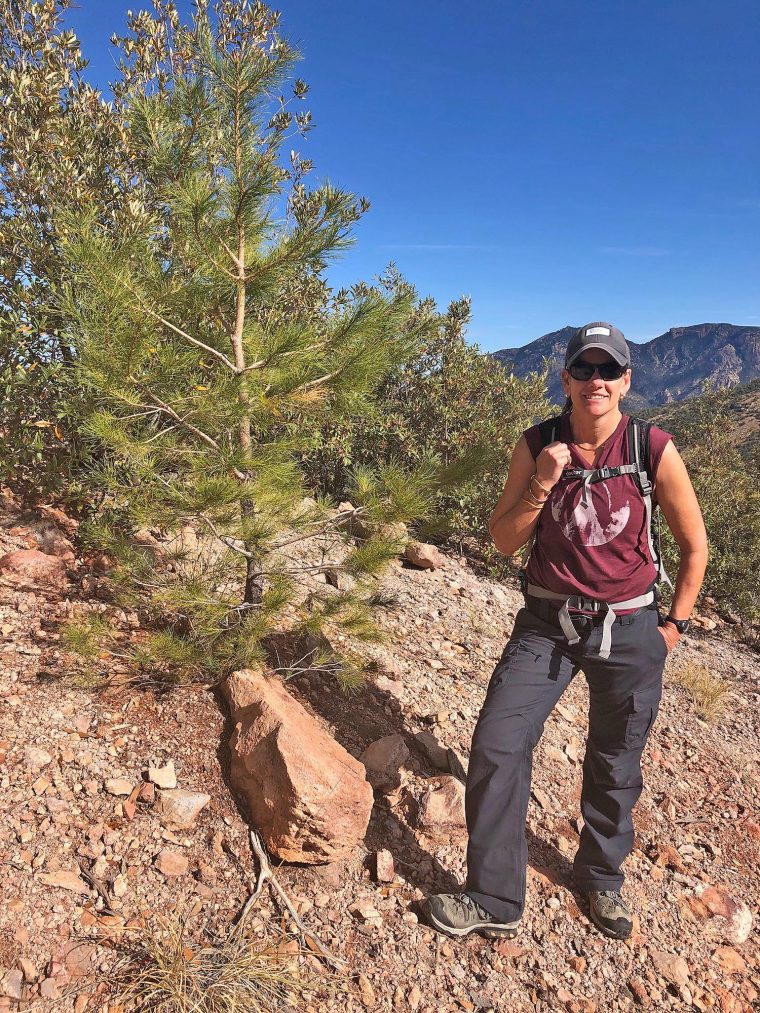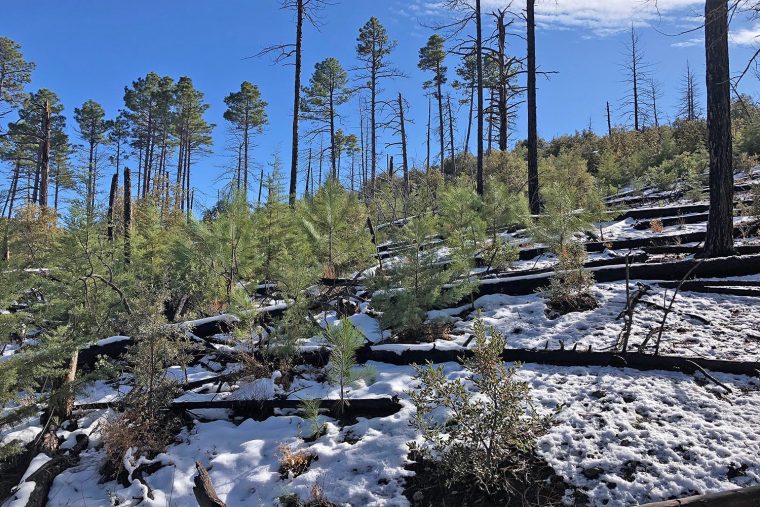NASA Supports Poulos’s Wildfire Research


Wildfires can transform forest ecosystems to varying degrees, depending on fire severity. While low-severity wildfires change plant community composition by killing short-statured trees and understory plants, high-severity fires result in top kill of above-ground vegetation. This variation in wildfire effects can have major impacts on post-fire vegetation composition and water stress.
Helen Poulos, adjunct assistant professor of environmental studies, received a $300,000 grant from NASA on Dec. 5 to examine how forests can permanently change in response to high-severity wildfire in southeastern Arizona.
Her project, “Evaluating the Potential of ECOSTRESS for Predicting Wildfire Effects on Plant Community Structure and Water Relations in an Arizona Sky Island Pine-Oak” will rely on data collected by the ECOsystem Spaceborne Thermal Radiometer Experiment on Space Station (ECOSTRESS) instrument which is affixed to the International Space Station. This sensor measures plant water stress and is able to predict wildfires’ effects on plant communities.
“Hot, big fires are increasing in prevalence across the West, and those fires are changing forest structure and species composition—the conversion of pine-oak forest to oak shrublands, for example,” Poulos said.
For this project, Poulos and her team will install a network of sap-flow sensors in the Chiricahua Mountains in Arizona, where an area was affected by the Horseshoe Two Fire in 2011. The senors will quantify diurnal, monthly, and seasonal variation in post-fire plant transpiration and water potential.
The senors will quantify diurnal, monthly, and seasonal variation in post-fire plant transpiration and water potential.

They’ll use this data, along with measurements gathered by ECOSTRESS imagery, to model the relationships among fire severity, plant water status, and vegetation response.
The results from this study will provide the first test of ECOSTRESS data products for wildfire-related applications.
“Such information is directly relevant to forest management and biodiversity conservation due to recent, widespread increases in the prevalence of wildfire throughout the West,” Poulos explained in the grant’s project proposal. “Moreover, products from this work would validate the use of ECOSTRESS both at the proposed study site and elsewhere as a critical tool for predicting wildfire effects on plant and site water balance and their cascading effects on plant community structure and function.”
Read more in this College of the Environment coexist blog.

